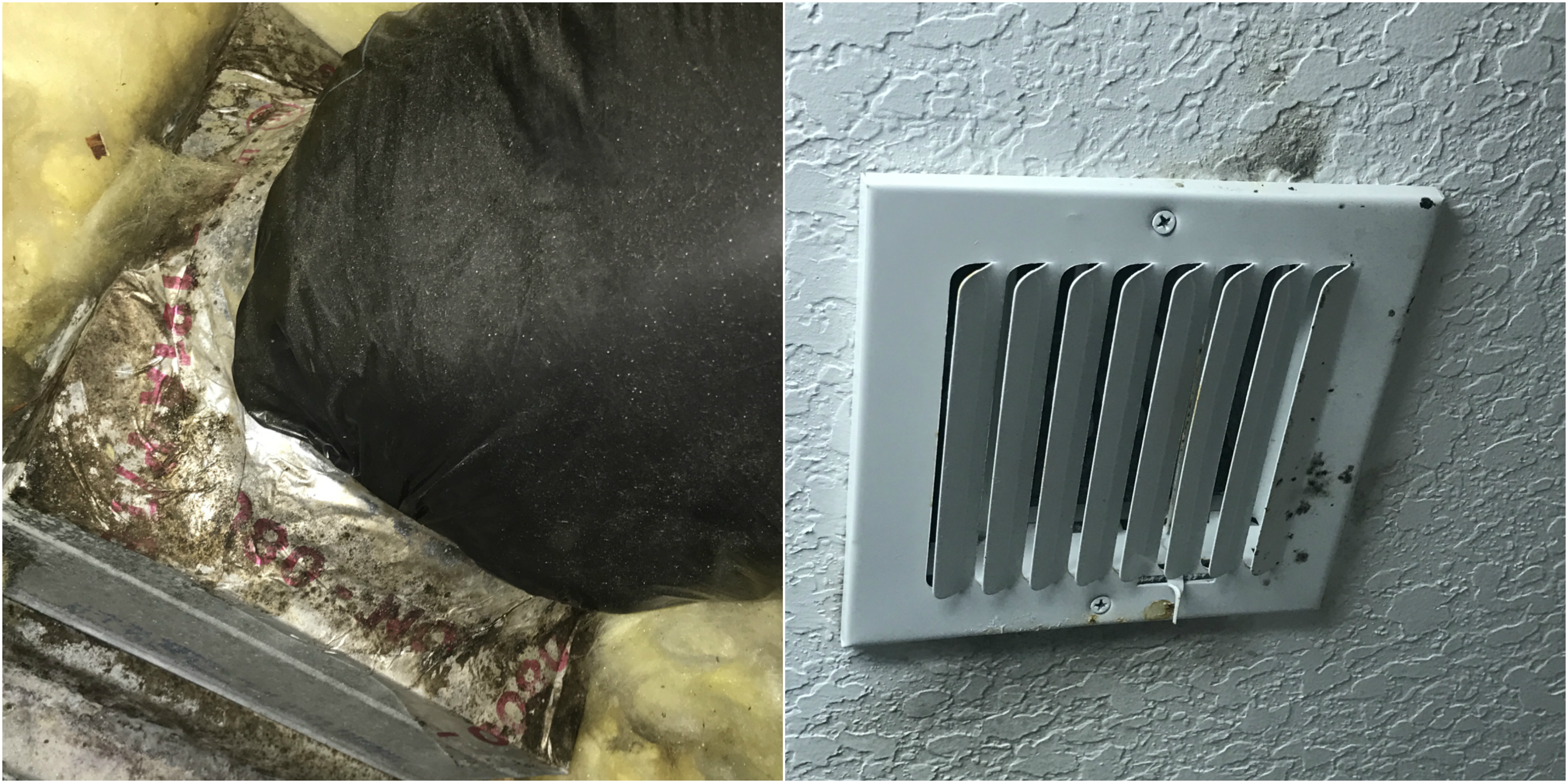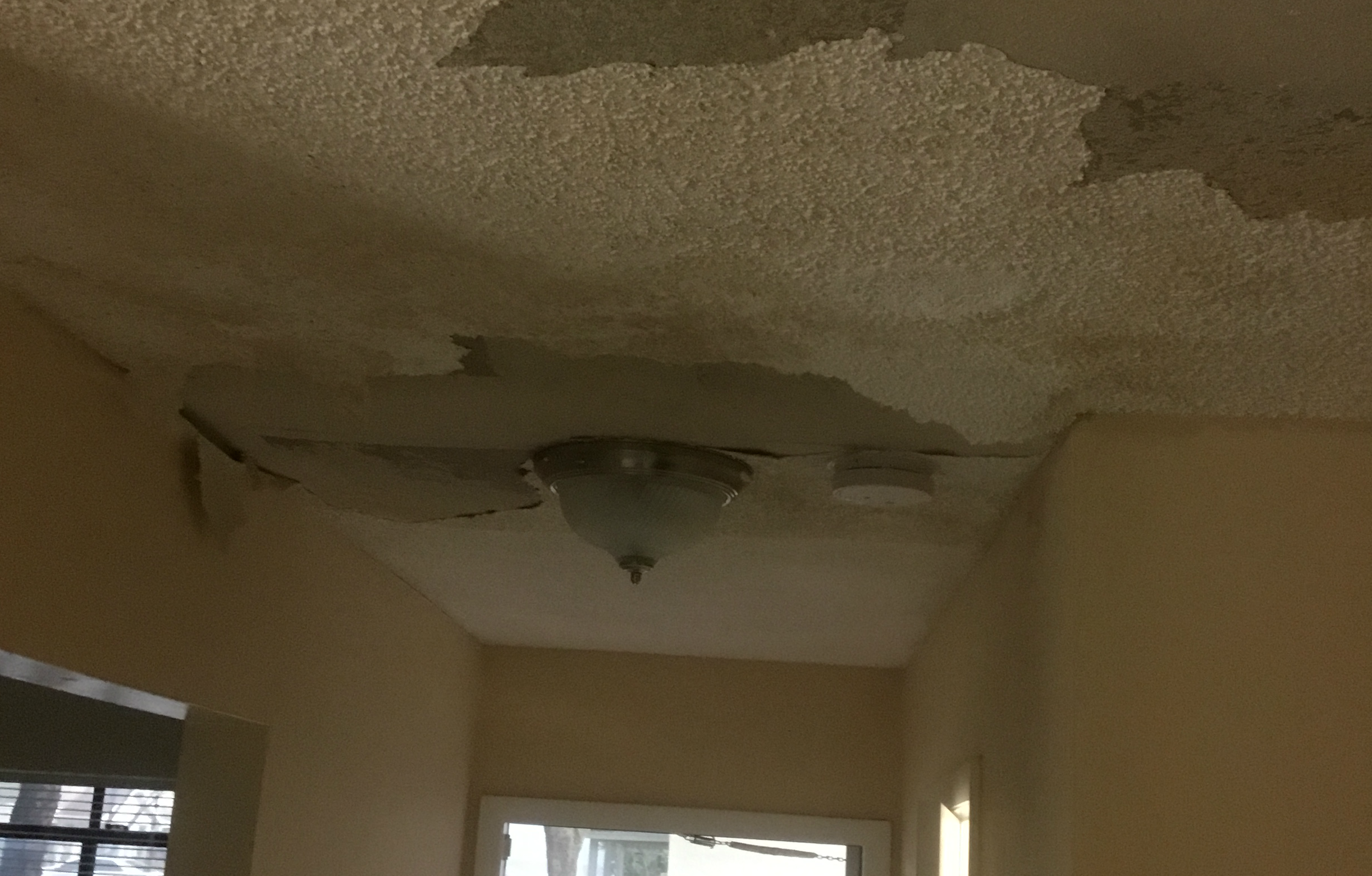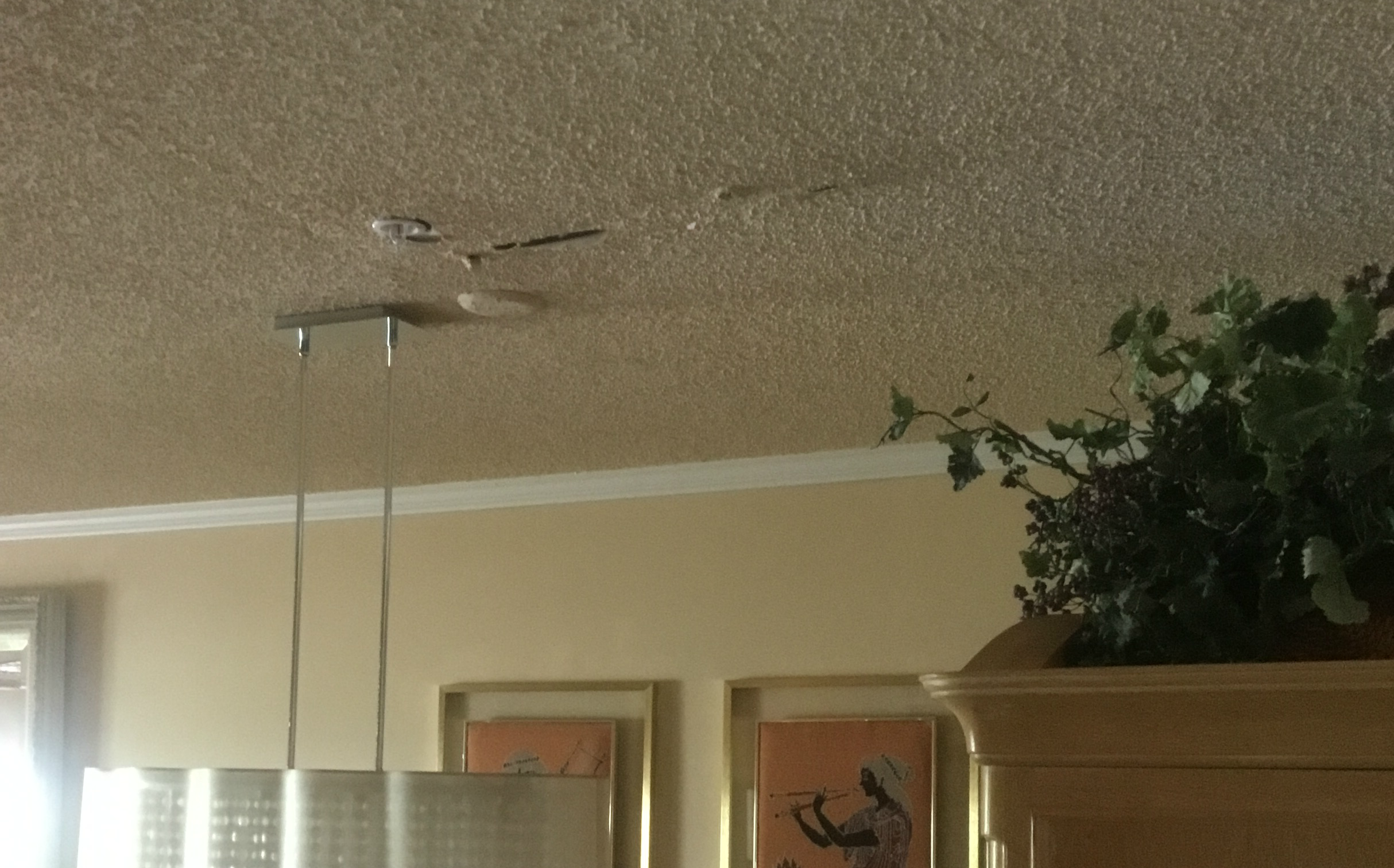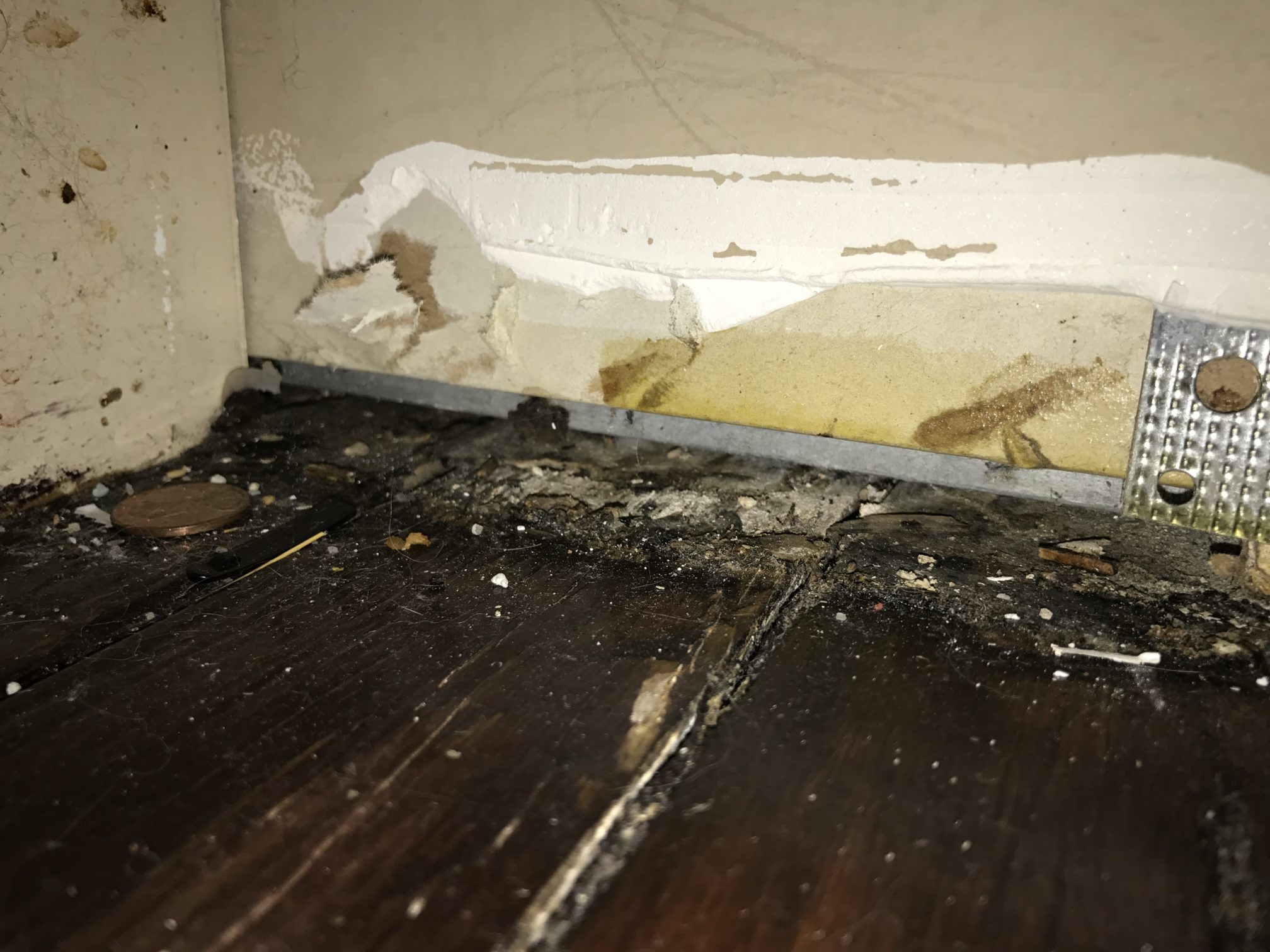Have you ever noticed little black spots on air vents in your bedroom? How about little droplets of condensation dangling precariously, ready to fall at any moment? Here in south Florida where humidity levels reach nearly 100%, it’s not uncommon for the duct work running through attics to begin sweating, especially as they work harder during the summer months. Most homeowners simply wipe the condensation and black spots away, sometimes even going so far as to use bleach. Almost no one ventures up into the attic to investigate further. That’s exactly what the victim did in this case of the sick house.
Dwelling: Single Family Home
Category: Mold
Location: AC Closet, Attic, Bedrooms, Bathrooms
For five years, Roman hadn’t thought much about the fact that his AC vents would start dripping condensation once in awhile. The only time it became annoying was when he would get splashed himself as he was walking underneath – not dissimilar to well-timed dive bomb of poop from a bird with a grudge. Much less dramatic of course, but you get the idea.
If it was just the water, he would simply grab a dish towel and wipe down the offending vent. It was during his wiping that he remembered to take notice of the weather, the humidity levels in particular. It seemed that his AC was just working harder because it was hotter and more humid. Still, there were times he noticed black growth on some of the vents. This prompted him to change his air filter, probably more often than he should have to, because he thought it was simply beyond its capacity.
It wasn’t until the AC vent in his bedroom closet spit on him one morning while he was getting ready for work that he noticed the black growth on the ceiling itself beside the AC vent, in addition to the same growth on the vent itself that he’d cleaned numerous times before. He decided to check near the vents in the other rooms of the house and noticed the black stuff growing not only around multiple vents, but also in the corners where the ceiling and walls met. His first thought was that he might have a roof leak.
He was fortunate that his brother-in-law was a handyman. He made the call and asked if he could come by and inspect his roof for a possible leak after explaining the situation. Later that afternoon, Roman’s handy bro-in-law was climbing around up in the attic, looking for signs of water damage or holes in the roof.
“I don’t see anything here, Bro. I mean, you got some dirt around some of your duct work and they’re sweating almost as bad as I am right now, but it’s an attic. It’s what they do. Just clean the spots with some bleach. I do it all the time.”
Grateful for the feedback and inspection, Roman still wasn’t convinced he didn’t have a bigger problem.
“Maybe I should call my AC company to come out and take a look.”
“You could do that, but I don’t think they’ll tell you anything beyond change your filter and maybe drain your drip pan or lines. I can do that for you and save you the $80 service fee. Look, if you’re really worried about it, call this restoration guy. He’ll come take a look at it for free.”
The next day, Lead Inspector and owner, Nate Smith was on the scene. His first thought was a roof leak as well. There was no doubt that the black growth was mold. That was the easy part. The more difficult task was finding the source. This case was especially troublesome because there was mold growing in multiple rooms of the house, most near AC vents and top corners of the rooms, but there was some indications of water damage and the beginning stages of mold near the baseboards and around the tub as well.
The AC closet was upstairs. That was the first stop after he’d walked around the house, making notes of each room that had signs of damage. He quickly noticed the steady drip from one of the drain pipes, leaking directly onto the floor underneath. Following his hunch, he went back downstairs, pulling out his moisture meter as he did so. As he’d suspected, the ceiling was wet directly underneath the AC closet. Roman mentioned the previous owners having a water leak in the same spot years before and had the ceiling patched up.
The AC closet was definitely a problem, but not the source of the mold growing in multiple rooms. He went around each room, testing for moisture on the drywall. Each time he got a positive reading back, but not high enough to be a leaking roof. He resigned himself to the fact that he was going to have to climb around the attic to even begin putting this puzzle together. Roman had a previous engagement he couldn’t get out of, so Nate had to stop his inspection and return the next day.
Nate remembered to pack a change of clothes the next morning in anticipation of being in the attic for awhile. There’s nothing he hated more than not being able to find the source of a problem. It was his specialty after all. Once in the attic, he zeroed in on the ducting leading directly to the vents. While a little sweating wasn’t uncommon, it was an indication that the AC system wasn’t working as intended.
He pulled back the insulation for the first vent, revealing the metal brackets holding the vent in place. Not only did he immediately identify that the duct work was allowing air to escape into the attic, but he also noticed the small stream of water trailing its way down the bracket down the the supporting framework of the house.
And mold. Mold growing on the fibers of insulation stuck to the metal bracket. Mold growing on the back of the insulation sheet itself, and of course, mold growing on the wood and drywall for the ceiling. Like a spelunker eagerly following an underwater stream, Nate quickly worked his way through the maze of duct work, pulling up insulation as he went to each vent. He felt the familiar rush of excitement at cracking this case. But a sadness began to fill his heart as he was putting the rest of the puzzle together.
Conclusion: The sense of sadness Nate felt was because he realized that nearly all of the duct work in Roman’s home is going to have to be replaced. Yes, attics are humid and some sweating may happen from time to time. But what he’d realized is that none of the duct work had been secured properly. There was a handmade bracket made of 2×4 beams for an odd angle for one of the ducts. There are parts specially made for such angles to ensure no air escapes into the attic space surrounding it. Just like there are connectors for each vent to prevent the same thing. Apparently, the contractors who had installed the duct work had cut some corners to save money. The air escaping into the hot, humid attic caused all of the duct work to sweat to the point of dripping profusely, creating pools of water as they dropped onto the attaching vent brackets. Gravity took care of sending the water down the walls and ceilings, creating the ideal environment for mold to grow.






